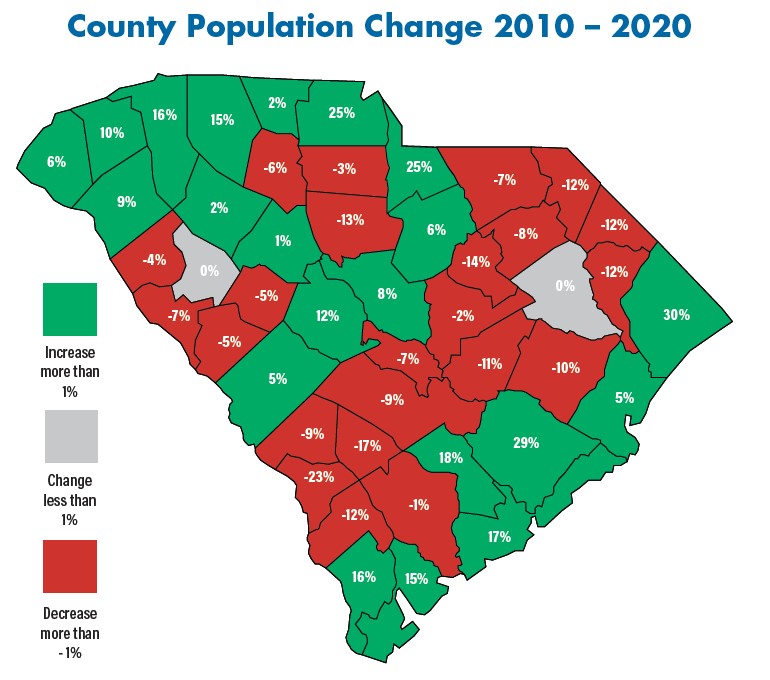In the coming decade, the nation’s population will have an older median age, the size of individual households will decrease, the population will continue to slow its rate of growth, and there will be an increase in racial and ethnic diversity. Dr. Jerome McKibben of McKibben Demographic Research presented these conclusions during a presentation on South Carolina’s demographic trends at Hometown Legislative Action Day.
McKibben said many demographers concluded that the 2020 U.S. Census missed between 2 to 4 million people nationwide, and placed somewhere between 6 to 8 million people at incorrect locations. He said that the shift to an online census process likely led to an undercount for rural areas or people with limited internet access, and the disruptions of the COVID-19 pandemic meant that many college students had temporarily relocated home just before the count. These issues have led some municipal officials to question whether they can appeal the official count with the Census Bureau. While McKibben said this was not possible, residents missed in the 2020 census could appear in the annual population estimates.
The national population grew by 7.4% from 2010 to 2020.

“It was the slowest growth rate since the 1930s. And the second slowest rate in this country’s history,” he said.
South Carolina counted an increase of 10.7% during that time, a decline from the 15.3% increase from 2000 – 2010. McKibben attributed this to slowing in-migration as well as the shrinking level of natural increase — the situation where total births exceed total deaths. In South Carolina, 28 of the 46 counties are experiencing natural decrease, where deaths exceed births. The counties that did grow are generally along the coast, in the Upstate, and across the Midlands from Lancaster to Aiken counties.
“The backbone of population growth in this country in the last 250 years is not immigration, it’s natural increase,” McKibben said. “If you have more deaths than births, it’s awful hard for your population to grow.”
While the under-18 population in South Carolina grew slightly by 23,491, it was outpaced by total population growth and therefore shrank by 1.8% as a percentage of the total population.
McKibben said this change “has huge implications for both K-12 education and higher ed. The pool is shrinking.”
In discussing migration trends in South Carolina, he said that most migration is short-distance, with people moving just far enough to get what they need, like a job or a house in a location that suits the wage earners of the household. The largest migrations flow from urban counties to nearby suburban counties.
While migration rates are the lowest for the age 50 to 64 bracket, he said that retirement-age residents have now chosen to remain in their existing homes. The pandemic has contributed to this, he said, with people staying close to family, friends and existing health care providers. The phenomenon has contributed to housing shortages, because even in an era of a dramatic housing construction boom in some parts of South Carolina, the vast majority of the housing market is made up of the sales of existing homes. However, McKibben said, the situation may reverse in time.
“Migration flows like water,” he said. “COVID put a giant dam in front of elderly migration, which has backed up behind it, just a little trickle going through now. And eventually, that giant wave of Baby Boomers is going to break through that dam, and you’re going to see a bunch of existing homes go on the market.”
